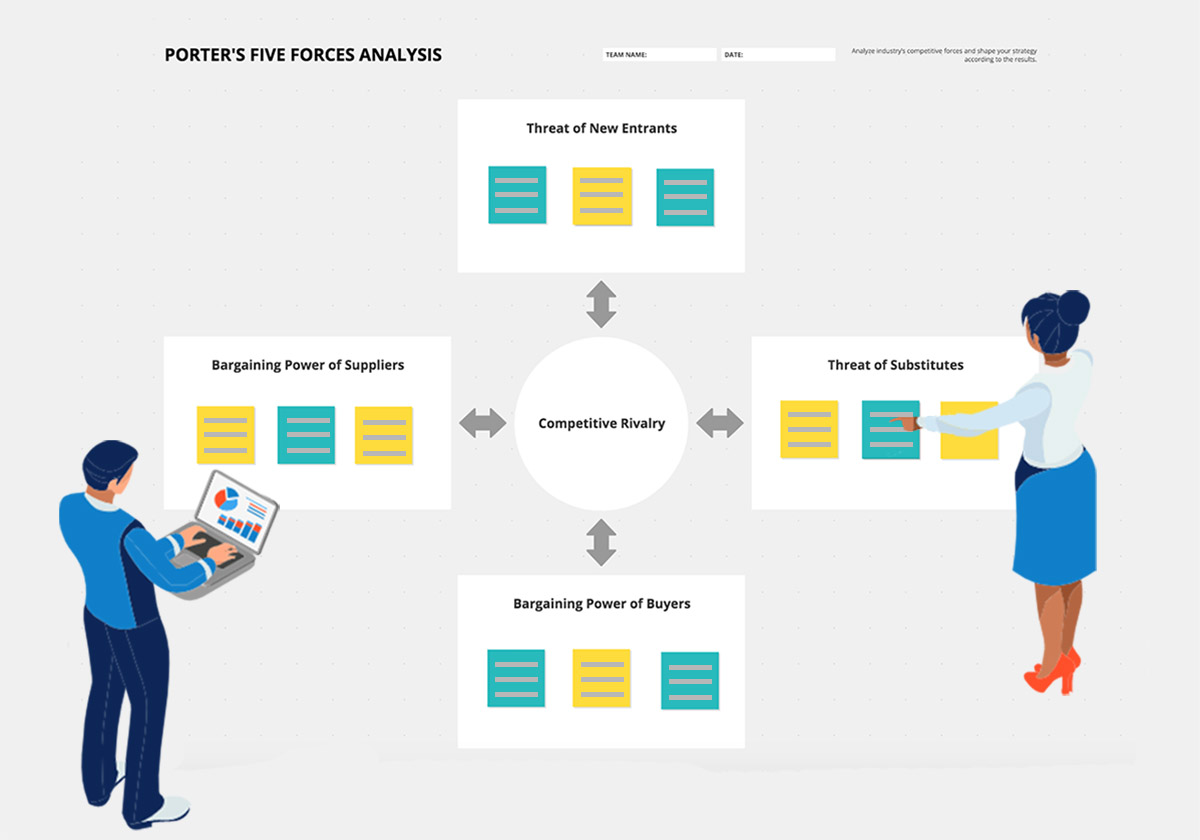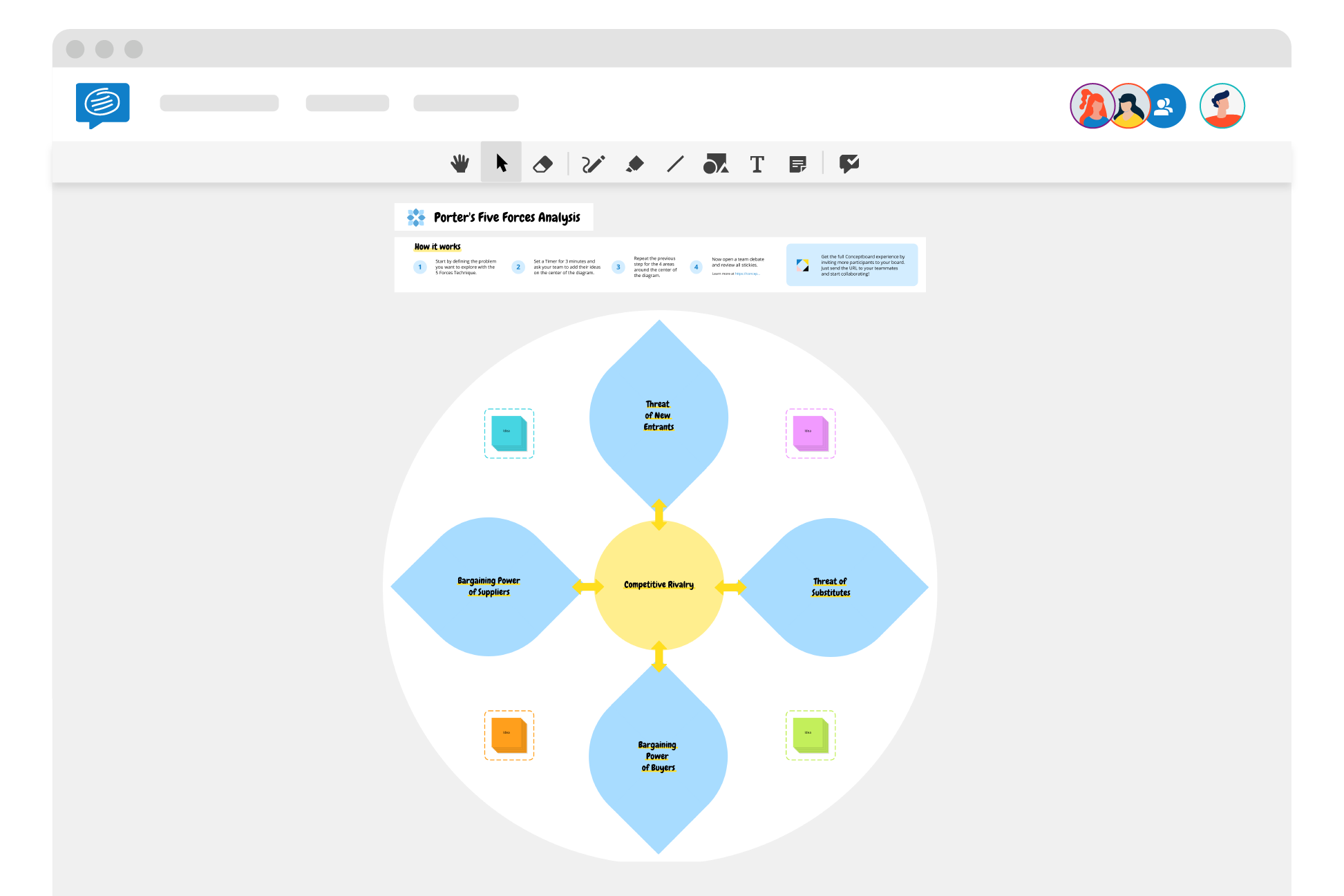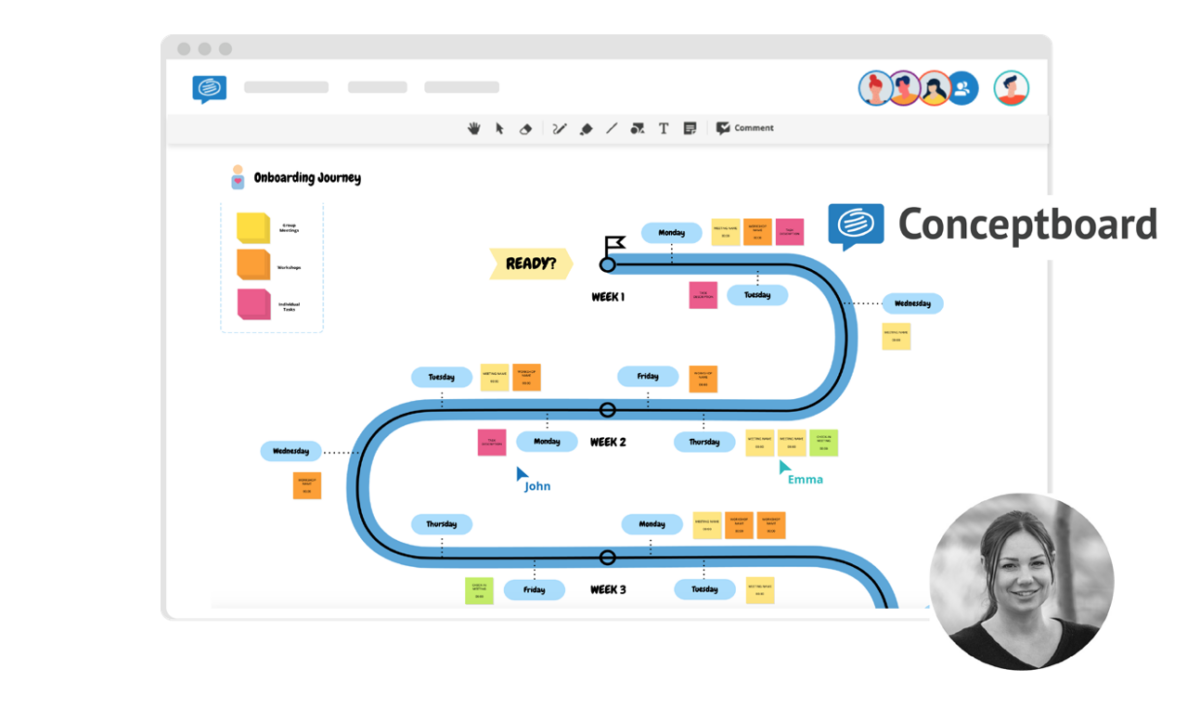“Competition in business is a blessing, for without it we wouldn’t be motivated to improve.”
-Nabil N. Jamal
What is the Porter’s Five Forces Analysis?
Porter’s Five Forces Analysis is a tool to help you understand the competitiveness within your industry.
Named after its creator business strategist, Michael E. Porter, Porter’s Five Forces Analysis has been gaining favor with business strategists since its publication in 1980. Porter believed that strategy shouldn’t be based purely on price, in fact it was five other factors that ultimately determined price.
These five important factors are the forces that create competition and influence prices:
- Supplier Power: the ability of suppliers to drive up their prices.
- Buyer Power: the strength of your customers to drive down your prices.
- Competitive Rivalry: the strength of competition in the industry.
- The Threat of New Entrants: the ease with which new competitors can enter the market
- The Threat of Substitution: the extent to which different products and services can be used in place of your own.
Understanding the Porter’s Five Forces
1. Competitive rivalry
The first force to look at is how many existing competitors are in your industry. If you have a lot of rivals, it will create a highly competitive marketplace, driven by aggressive pricing and expensive marketing campaigns that will impact your bottom line.
This force examines how intense the competition currently is in the marketplace, which is determined by the number of existing competitors and what each can do.
To complete this section, ask yourself:
- How many competitors do you have?
- Who are they? Are they established brands, or small businesses?
- How does the quality of their products and services compare to yours?
2. Bargaining power of suppliers
Every business relies on suppliers in one way or another. This creates a strong dependance on suppliers which can effect pricing based on if a supplier wants to drive up cost for imports. So we need to look at how much control your suppliers have over the potential to raise prices, effecting your margins.
Plus, being aware of the number of suppliers available: The fewer there are, the more power they have. However, when there are a multitude of suppliers, businesses can afford to be more picky in order to increase profit margins.
To complete this section, ask yourself:
- How many potential suppliers do you use?
- How many suppliers are available for your key products?
- How unique is the product or service that they provide?
- How expensive would it be too switch from one supplier to another?
3. Bargaining power of customers
“The customer is king”. We’ve all heard it before, but is it true? Customers can have a lot of power when it comes to determining pricing.
Savvy customers know this, and are willing to switch from one business’s products or services to another’s to get a better deal.
However, if you have many customers, and you offer a less common product, you retain the power to determine pricing and terms of sale.
To complete this section, ask yourself:
- How many buyers are there, and how big are their orders?
- How much would it cost them to switch from your products and services to those of a rival?
- Are your buyers strong enough to dictate terms to you?
4. Threat of new entrants
This refers to the force of barriers to entry for new entrants. How easy is it for competitors to enter the marketplace?
In industry’s with few barriers of entry, there is a much greater risk of a business’s market share being depleted. When a business positions itself against rivals with an absolute cost advantages, access to inputs, economies of scale and dominance from well-recognized brands, competitors are less likely to try to enter.
To complete this section, ask yourself:
- How easy is it to get a foothold in your industry or market?
- How much would it cost?
- How quickly could a new competitor be up and running?
5. Threat of substitute products or services
The fifth force looks at the longevity of your product in the marketplace. Can your business stand up against a market shift, new models or service offerings, or cheaper and easier substitutions?
For example, if you supply a unique software product that automates an important process, people may substitute it by doing the process manually or by outsourcing it.
To complete this section, ask yourself:
- What threats does my industry face in terms of advancement?
- Are my customers inclined to change?
- How much would it cost them to switch?
Why should I conduct an analysis?
If you’re struggling to decide what to do next, now is a good time to conduct a Five Forces Analysis. When you’re busy working in the business, it’s hard to see the bigger picture. So by taking a step back and answering the right questions, you may uncover a new direction.
Key decisions such as whether to enter a market or not, how to price a product, which key suppliers or partnerships should you focus on, and of course understanding who are the future competitors can all be measured using this tool.
Secondly, by analysing five key areas that determine the competitive intensity, you will also be able to get a clear overview of just how tightly held, or open your industry is. By then thinking about how strongly each force affects you, you can quickly assess your position within your industry.
Using this information, you can then logically identify adjustments or tweaks you could make to your strategy to ultimately deliver greater profits.
How do I conduct an analysis?
To begin to understand your situation, start by brainstorming any relevant factors in your industry, then plot your observations in a Porter’s Five Forces Analysis template.
To help kick start the brainstorming process, you can answer the key questions we’ve listed above.
Once you’ve got a range of factors in the online worksheet, the next step is to look at just how much this force effects you. Use sticky notes, or simple text to add this information. A simple scale you can use is:
+ A force that’s moderately in your favor
++ A force that’s strongly in your favor
– A force that’s moderately against you
– – A force that’s strongly against you
Once you’ve got all this information in the template, you should be able to clearly see where you stand.
Remember that few situations are perfect, so be prepared to accept some forces that are strongly against you.
The options are limitless, and completely up to you, but thanks to this analysis you are now in control of your future and you are much more empowered to make strategic decisions.
If you’d like to continue with further strategic analysis, check out our PESTEL Analysis template or our SWOT Analysis template.






